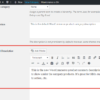
In April 2015, Google released an algorithm update that favored mobile-friendly pages in Google’s mobile oriented search results. This algorithm was named “Mobilegeddon”, and it gave leverage to those sites that display perfectly on smartphones and other mobile devices.
Clearly, having a mobile-friendly website not only makes it easier to engage and convert mobile using customers, but also paves the way for better ranking and visibility on search engines.
While it is good practice to get a WooCommerce mobile app for your store, it is also important to optimize your website and make it more mobile-friendly.
We will first discover the benefits of making your website more mobile-friendly, and then learn the tips and tricks to optimize it for small devices.
Why is mobile-friendliness important for WooCommerce store owners?
Having a mobile-friendly website ensures a remarkable user experience and eventually results in better engagement and conversions, which means that’s both good for users and search engines.
Here follow some of the benefits.
1. Increased traffic
There have been ample studies, reports, and surveys to prove that mobile devices can bring in more traffic than desktops, depending on the industry.
Mobile phone users are more likely to visit a website more frequently and contribute to the increase in traffic and engagement on your WooCommerce store.
2. Reduced bounce rate
The average attention span of an online customer has reduced significantly over the years. Thus, having a responsive website helps as it loads faster and without display errors.
This in turn ensures more engagement as impatient users will not bounce off quickly.
3. SEO
As discussed above, most search engines, including Google, favor websites that are responsive and mobile-friendly. This ensures better rankings and visibility for your online store and ultimately leads to more traffic and conversions.
4. Enhanced conversions
Web users are more likely to “browse, buy and forget” a website. On the other hand, mobile users are more likely to be loyal and launch the same site more frequently. All these factors together lead to a better conversion and retention rate and thus contribute to better revenue and ROI (Return on Investment).
Five ways to make your WooCommerce store more mobile friendly
WooCommerce belongs to the rich and robust ecosystem of WordPress. It is backed by multiple themes and plugins and can be customized to suit any eCommerce business or brand goal. Go through some of the tips listed below and implement them to make your site responsive and mobile-friendly. Follow these suggestions and make the most of the opportunities that come your way:
1. Rethink mobile site navigation
From onboarding to ordering and checkout, the journey of your visitors will depend on the ease of navigation on your website. Add intuitive UI and UX elements and make it easier for your users to go from one point to the other and progress in their journey without any friction. Make the design device-agnostic and suitable for all kinds of mobile devices.
Design smart menus that let users access critical content and features with a few clicks. Add hamburger menus and bottom bars for easy navigation and avoid very complex hierarchies. Simplify your main menu and arrange buttons and clickables without eating up too much space on the screen.
2. Test your website’s mobile-friendliness
Start with testing your website’s responsiveness and keep assessing its mobile friendliness at regular intervals. You can use professional tools and software to test your website’s performance on mobile devices. You may also be required to optimize the content and media for the same.
Make use of Google Search Console and mobile-friendliness testing tools and always keep your site under check. Here, you can just enter the URL of your website and test its performance for mobile devices. Resolve the issues if any and validate the changes to make your site error-free.
3. Avoid interruption elements
Pop-ups, notification opt-ins, lead generation forms, advertisements, banners, etc., are important for any business to build and expand its consumer base. However, too much interruption can affect your visitor’s journey and lead to an increase in churn and bounce rate.
As screens are smaller on mobile-devices, such elements can take up the whole real estate and lead to a poor browsing experience.
4. Use mobile-optimization plugins
As discussed above, WordPress and WooCommerce are powered by a pool of plugins and themes that can be used to enhance the functionality and performance of your website. Look for such mobile-optimization plugins and achieve your goals faster.
For instance, you can go with the AMP (Accelerated Mobile Pages) plugin that has been designed to support mobile commerce and boost the mobile-friendliness of your website. It is one of the best and most popular solutions for mobile-optimization and can be easily integrated with your WooCommerce store.
AMP essentially strips excess elements from the mobile version of your website to ensure it loads smoothly on mobile devices. Even today, it’s one of the easiest ways to instantly optimize your mobile site.
5. Build a dedicated mobile app for your store
Besides making your site mobile responsive, you can also launch an app and make it easier for your mobile customers to access your store with a click. Thanks to the robust technical and software infrastructure that bolsters WordPress, it has become simpler to launch an app for WooCommerce.
You can refer to AppMySite’s guide and learn how to create an app without coding in minutes. Launch your own app using a no-code app development solution and reduce your time to market. Give customers one-touch access to your store and grow your engagement.
In conclusion
Implement the suggestions listed above to increase the mobile-friendliness of your WooCommerce store. Keep testing your site’s performance regularly and iron out any kinks that occur from time to time.
Also complement your website with an equally powerful mobile app and offer a more personalized mobile browsing experience to your customers. Launch WooCommerce apps for both Android and iOS and grow your user base.





